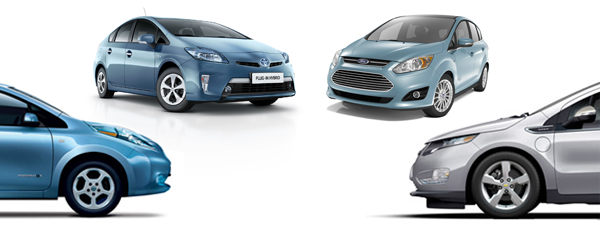US plug-in sales set no new record in May, but the total of 7,554 units wasn’t too far behind the all-time monthly sales record of 8,559, set in December of 2012.
US plug-in sales set no new record in May, but the total of 7,554 units wasn’t too far behind the all-time monthly sales record of 8,559, set in December of 2012.
The LEAF regained the lead position, after being edged out in April by Tesla’s upstart Model S. Nissan’s electric hatchback sold 2,138 units in May, its second best month ever, and an increase of over 300 percent compared to May of 2012. According to InsideEVs, Nissan’s factory in Smyrna, Tennessee is having trouble keeping up with dealer orders, especially on the entry-level S model, and national inventory has fallen to just over 2,000.
Tesla’s Model S continues to sell well. InsideEVs estimate that 1,800 of the luxury sedans found homes in May (this includes Canadian sales), bringing year-to-date sales to 8,900, the most of any plug-in model. The company says it is now producing over 500 vehicles per week, and buyers are getting their orders filled in under a month.
The Chevy Volt reversed its declines of the last two months – it sold 1,607 in May, but that’s still down about 4% from May 2012′s figure. The 2014 model is expected to hit the market this month, and GM has been offering a $3,000 discount on the 2013s. A next-generation Volt, which CEO Dan Akerson has said will be priced $7,000 to $10,000 less, and will also be profitable, is expected to show up as the 2016 model.
Toyota’s Prius Plug-In held on to fourth place, rebounding to 678 units after an all-time low of 599 units in April. It’s beginning to look as if the PPI’s 2013 sales will fall short of the 2012 figure, which would make it the first plug-in to post a year-to-year sales decline. And the reason…
…might just be competition from Ford’s electrified lineup, which the company has been aggressively marketing as an American-made alternative to the PPI. The Ford Fusion Energi sold 416 units in May, an all-time high in its fourth month on the market. The C-MAX Energi hatchback moved 450 units in May. The combined year-to-date total for the two Ford PHEVs is ominously close to that of the PPI.
Sales of the Ford Focus Electric held steady at 157, making it the third-best-selling pure EV, although it’s several laps behind the LEAF and Model S.
Way back in the pack, plodding around the track, the Toyota RAV4 EV, Mitsubishi i-MiEV and Honda Accord Plug-In each sold a handful of vehicles. Now that Tesla has put EVs in the mainstream headlines, will these automakers finally get interested, and start advertising their EV models? Don’t keep the engine running…
The booby prize, as usual, goes to the Honda Fit EV, which sold (insert sigh or snicker here, depending on your political leanings) 15 units. This month, Honda announced a major reduction in the Fit EV’s lease rate. Does this mean the company is finally planning to try to move some cars, and if not, why on Earth did they bother?
A promising contender joined the race this month, as the smart fortwo electric drive went on sale in California, and 60 units were delivered. This quirky two-seater has finally got the electric powertrain it was originally intended to have, and it’s a car to watch. It’s the cheapest highway-capable EV on the US market (starting at $25,000), and the only convertible. The company is featuring it prominently on the web, and sponsoring a series of marketing events around the country.


 Create Account. Already Registered? Log In
Create Account. Already Registered? Log In











































